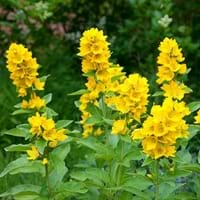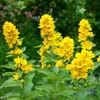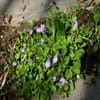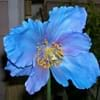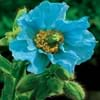Life Span
Perennial
Annual and Perennial
Type
Perennial
Bulb or Corm or Tuber
Origin
Eastern Europe, Turkey
Latin America and the Caribbean, Central America, Micronesia
Types
creeping Jenny, L. ephemerum
Hannah Yams, Japanese Sweet Potatoes
Number of Varieties
Not Available
Habitat
damp broad-leaved forests, damp meadows, ditches, roadside embankments, shores, stream banks
Cold Regions, Tropical regions
USDA Hardiness Zone
4-8
11-12
Sunset Zone
1a, 1b, 2a, 2b, 3a, 3b, 4, 5, 6, 7, 8, 9, 14, 15, 16, 17, 18, 19, 20, 21, 22, 23, 24
21,22
Habit
Upright/Erect
Vining/Climbing
Minimum Width
Not Available
Flower Color
Yellow
Not Available
Flower Color Modifier
Bicolor
Bicolor
Fruit Color
Not Available
Not Available
Leaf Color in Spring
Green, Dark Green
Green, Purple, Light Green, Chartreuse, Bronze
Leaf Color in Summer
Green, Dark Green
Light Green
Leaf Color in Fall
Green, Dark Green
Several shades of Green
Leaf Color in Winter
Light Green
Light Green
Leaf Shape
Long Linear
Heart-shaped
Plant Season
Summer
Spring, Summer, Fall, Winter
Sunlight
Full Sun, Partial Sun, Partial shade
Full Sun, Partial Sun
Growth Rate
Fast
Very Fast
Type of Soil
Clay, Loam
Clay, Loam, Sand
The pH of Soil
Acidic, Neutral, Alkaline
Acidic, Neutral, Alkaline
Soil Drainage
Well drained
Well drained
Bloom Time
Late Spring, Early Summer
Late Fall, Early Winter, Winter
Tolerances
Drought
Drought
Where to Plant?
Container, Ground, Pot
Ground, Pot
How to Plant?
Divison, Seedlings
Stem Cutting, Tuber propagation
Plant Maintenance
Medium
Medium
Watering Requirements
Keep the ground moist but not water-logged, Requires consistently moist soil
Average Water Needs, Needs a lot of water initially
In Summer
Lots of watering
Lots of watering
In Spring
Moderate
Moderate
In Winter
Average Water
Average Water
Soil pH
Acidic, Neutral, Alkaline
Acidic, Neutral, Alkaline
Soil Type
Clay, Loam
Clay, Loam, Sand
Soil Drainage Capacity
Well drained
Well drained
Sun Exposure
Full Sun, Partial Sun, Partial shade
Full Sun, Partial Sun
Pruning
Remove damaged leaves, Remove dead branches
Remove damaged leaves, Remove dead branches, Remove dead leaves
Fertilizers
All-Purpose Liquid Fertilizer, organic fertlizers, slow-release fertilizers
All-Purpose Liquid Fertilizer
Pests and Diseases
Slugs, Snails
Aphids, Beetles, Leafminers, Red blotch
Plant Tolerance
Drought
Drought
Flower Petal Number
Single
Single
Foliage Texture
Coarse
Coarse
Foliage Sheen
Matte
Matte
Invasive
Sometimes
Sometimes
Attracts
Birds, Butterflies, Hummingbirds
Aphids, Beetles, Mites, white worms
Allergy
Skin irritation
Abdominal pain, Skin rash, Swelling, Vomiting
Aesthetic Uses
Showy Purposes
Not Used For Aesthetic Purpose
Beauty Benefits
Not Available
Not Available
Environmental Uses
Not Available
Air purification
Medicinal Uses
Astringent, Diarrhea, Dysentry, Gastrointestinal disorders
Potassium, ß-carotene, Vitamin C
Part of Plant Used
Whole plant
Leaves, Root, Shoots
Other Uses
Used for its medicinal properties
Used As Food, Used for its medicinal properties
Used As Indoor Plant
No
Yes
Used As Outdoor Plant
Yes
Yes
Garden Design
Groundcover, Mixed Border, Wildflower
Container, Edible, Groundcover, Hanging Basket, Herb / Vegetable, Mixed Border, Vine
Botanical Name
LYSIMACHIA punctata
IPOMOEA batatas
Common Name
Yellow Loosestrife, garden loosetrife, garden yellow loosetrife
Sweet Potato, Sweet Potato Vine
In Hindi
Yellow Loosestrife
शकरकंद
In German
Gilbweiderich
Süßkartoffel
In French
salicaire Jaune
Patate douce
In Spanish
Lisimaquia amarilla
Batata
In Greek
κίτρινο loosestrife
Γλυκοπατάτα
In Portuguese
Loosestrife amarelo
Batata doce
In Polish
żółty toje
Słodki ziemniak
In Latin
Yellow Loosestrife
Dulcis SOLANUM TUBEROSUM
Phylum
Anthophyta
Magnoliophyta
Class
Equisetopsida
Magnoliopsida
Order
Primulales
Solanales
Family
Primulaceae
Convolvulaceae
Clade
Angiosperms, Asterids, Eudicots
Angiosperms, Asterids, Eudicots
Tribe
Not Available
Not Available
Subfamily
Not Available
Not Available
Number of Species
Not Available
Season and Care of Yellow Loosestrife and Sweet Potato
Season and care of Yellow Loosestrife and Sweet Potato is important to know. While considering everything about Yellow Loosestrife and Sweet Potato Care, growing season is an essential factor. Yellow Loosestrife season is Summer and Sweet Potato season is Summer. The type of soil for Yellow Loosestrife is Clay, Loam and for Sweet Potato is Clay, Loam, Sand while the PH of soil for Yellow Loosestrife is Acidic, Neutral, Alkaline and for Sweet Potato is Acidic, Neutral, Alkaline.
Yellow Loosestrife and Sweet Potato Physical Information
Yellow Loosestrife and Sweet Potato physical information is very important for comparison. Yellow Loosestrife height is 60.00 cm and width 120.00 cm whereas Sweet Potato height is 60.00 cm and width Not Available. The color specification of Yellow Loosestrife and Sweet Potato are as follows:
Yellow Loosestrife flower color: Yellow
Yellow Loosestrife leaf color: Green and Dark Green
Sweet Potato flower color: Not Available
- Sweet Potato leaf color: Green, Purple, Light Green, Chartreuse and Bronze
Care of Yellow Loosestrife and Sweet Potato
Care of Yellow Loosestrife and Sweet Potato include pruning, fertilizers, watering etc. Yellow Loosestrife pruning is done Remove damaged leaves and Remove dead branches and Sweet Potato pruning is done Remove damaged leaves, Remove dead branches and Remove dead leaves. In summer Yellow Loosestrife needs Lots of watering and in winter, it needs Average Water. Whereas, in summer Sweet Potato needs Lots of watering and in winter, it needs Average Water.
